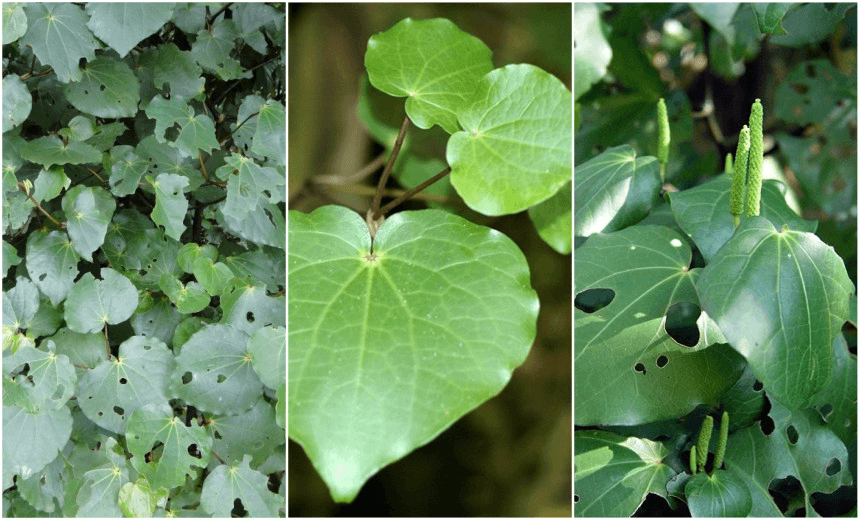Kawakawa is said to have the healing properties of all the other plants in the ngahere combined. Donna Kerridge explains how to use this versatile plant.
Kawakawa (Macropiper excelsum) is one of the most easily recognised plants in the New Zealand bush with its heart shaped leaves, knobbly joints along its trunk, its holey leaves as a result of the nibblings of the looper caterpillar, the unmistakable aroma of the leaves and taste of the fruits.
Modern uses for kawakawa span the food industry from craft beers, fancy teas and high value food seasonings, to the cosmetic industry and natural health products.
In addition to all of this there are numerous scientific studies in New Zealand and around the world investigating the medicinal properties and potential medicinal applications of kawakawa. One such report by Alistair T. B. Richardson for the New Zealand Institute of Chemistry in 2015 identified the diverse healing potential of the kawakawa. Myristicin, one of two known bioactive molecules present in kawakawa, is anti-inflammatory, anti-microbial and hepatoprotective. It is also an effective insecticide and known psychoactive.
Diayangambin, another bioactive found in kawakawa, exhibits anti-inflammatory and immunosuppressant properties. Bioactive alkaloids including piperchabamide A found in kawakawa have known gastroprotective properties. Our scientists acknowledge that there is still some way to go before they are able to accurately isolate and identify all of the active properties of the kawakawa and it is potential for future medicinal applications.
On the other hand, Māori have long had their own explanations for what scientists are now learning about the healing properties of kawakawa.
Kawakawa is an extremely important plant in the Māori world and carries much mana. It is one of the ceremonial plants used to remove tapu from people and places and it is worn at tangihanga as a symbol of grief. It is also the name given to the highly prized variety of pounamu that is dark to rich green in colour.
Kawakawa’s close cousin Piper methysticum (also known as kavakava in Tonga and awa in Hawaii) is also held in high regard by the first nations people of those places and in some places, is considered to be the keeper of the healing knowledge of the Gods.
It is said that Tāne-māhuta recruited the Patupaiarehe to help plant the forest trees. As the first of the healing plants to be planted, Tāne imbued the healing qualities of all other plants in the kawakawa, and in doing so bestowed upon it pride of place among our rongoā rākau.
Despite the bitter taste of kawakawa it is revered for its calming and relaxing properties. Its analgesic effects also assist in relaxing tight muscles. Māori have used kawakawa for all manner of problems since arriving in Aotearoa. These include the internal consumption of decoctions for a variety of conditions, or topically as a hot compress. Poultices from the bark and leaves are applied for a range of infections. The smoke from burning aerial parts is also used as an insecticide, rectally for pain and vaginally for helping new mothers release placenta. Macerated leaves are also applied topically and orally to relieve pain. This is to name but a few of the healing uses of the kawakawa, which is truly the cure all of the ngahere. It is gratifying to yet again see traditional wisdoms and modern science converging. Perhaps in time we might also see a converging respect between the two worlds in an effort to better serve those who seek the help of both modern and traditional health professionals.
How to make a simple kawakawa balm
This balm is useful for the relief of some skin conditions and aching muscles.
In a double boiler gently tear up about 10 Kawakawa leaves appropriately harvested and add 500gm of carrier oil of your choice, a dollop (5-10gms) of shea butter (optional), 100gms of beeswax and gently heat for about 5 hours.
Strain the oil through a muslin cloth to separate the leaves from the oils and melted beeswax. Give the oils a gentle stir as they begin to cool and pour into small jars. Makes approximately 5 x100gm jars. Return the used leaves to the bush.
Ātea supports The Aunties – an organisation that provides material needs for Te Rōopu O Te Whānau Te Rangimariē O Tamaki Makaūrau, Womens Refuge, the NZ Prostitutes Collective, The Salvation Army and more. Click here to find out how you can help.
